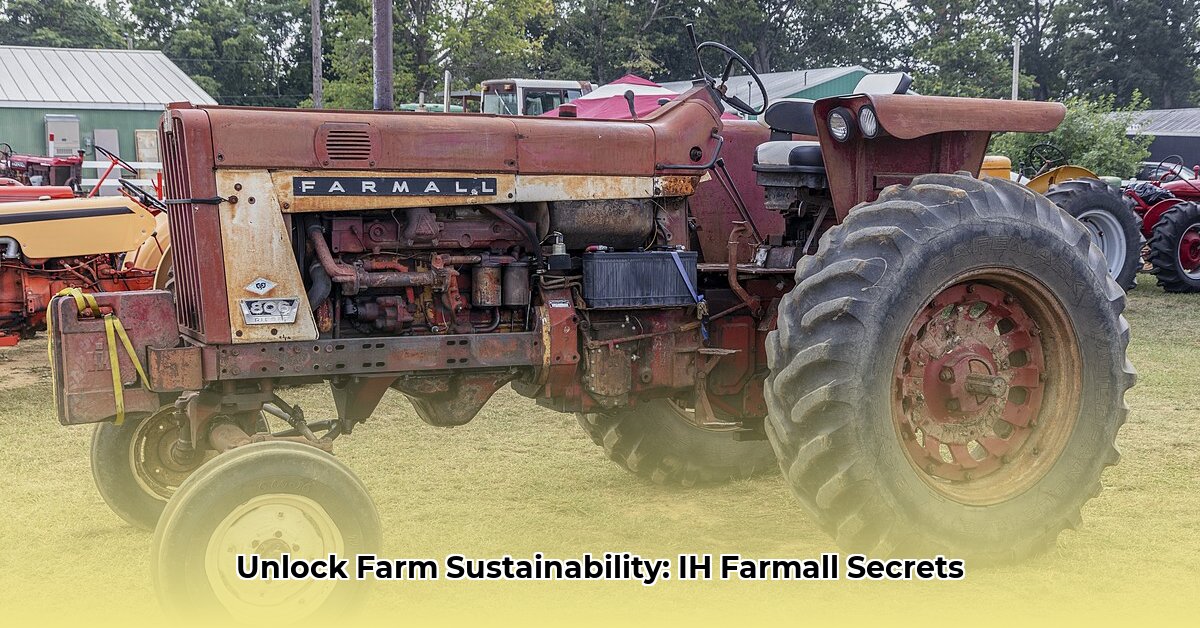
Choosing the Right Case IH Farmall Tractor for Your Farm
Choosing the right tractor is a pivotal decision for any farmer, impacting both operational efficiency and environmental sustainability. This guide provides a comparative analysis of Case IH Farmall tractors, helping you select the model that best suits your farm's size, crops, and budget, while contributing to environmentally friendly farming practices. We'll explore the various models, analyze their key specifications, and guide you through a decision-making process to ensure you invest wisely. For more information on Category One tractors, check out this helpful resource: Category One Tractors.
Decoding the Farmall Lineup: A Comparative Analysis
Case IH offers a diverse range of Farmall tractors, categorized broadly into Compact, Utility, and High Horsepower models. Each category caters to specific needs, ensuring a suitable option regardless of farm size or operational requirements. Think of it like selecting the right tool for a job; a screwdriver won't build a house, and a bulldozer is overkill for minor repairs. The right Farmall ensures optimal efficiency and avoids unnecessary expense.
Compact Farmalls: Precision and Maneuverability
Ideal for smaller farms, specialty crops (vineyards, orchards), and applications needing precise maneuvering in confined spaces, Compact Farmalls are the equivalent of a skilled hand for delicate tasks. Their smaller size and greater maneuverability make them perfect for navigating tight rows and working in areas where larger tractors struggle.
Utility Farmalls: The Versatile Workhorses
These tractors provide a balance between power and maneuverability, making them suitable for a wide array of tasks on medium-sized farms. From tilling to operating implements, Utility Farmalls offer a versatile solution for efficient farming operations. They are as reliable as they are versatile. Do you need a tractor that does everything? These are for you.
High Horsepower Farmalls: Power and Efficiency for Large-Scale Operations
Representing the heavyweights of the range, High Horsepower Farmalls are designed for large-scale operations, intensive workloads, and extensive acreage. These versatile tractors are ideal for operations where power and efficiency are paramount. They are ideal for large-scale operations with high-volume needs.
Key Specifications: Fuel Efficiency and Environmental Impact
The following table provides a comparative analysis of key specifications, highlighting features directly impacting sustainable farming practices:
| Feature | Compact Farmall | Utility Farmall | High Horsepower Farmall |
|---|---|---|---|
| Engine Horsepower (HP) | 25-45 | 45-75 | 75+ |
| Transmission | Mechanical/Hydrostatic | Mechanical/Hydrostatic | Mechanical/Hydrostatic |
| PTO Horsepower (HP) | 15-30 | 30-50 | 50+ |
| Lifting Capacity (lbs) | 2,000-4,000 | 4,000-6,000 | 6,000+ |
| Fuel Efficiency (gal/hr, approx.) | 1-3 | 3-5 | 5-7+ |
| Emission Standards | Tier 4 Final | Tier 4 Final | Tier 4 Final |
| Technology | Optional | Often Standard | Typically Standard |
Note: Specifications vary by exact model and configuration. Always refer to official Case IH documentation for precise details.
Isn't fuel efficiency crucial for sustainable farming? The table showcases significant differences in fuel consumption among the models, directly influencing your operational costs and environmental footprint.
Choosing the Right Model: A Step-by-Step Guide
Selecting the optimal Farmall involves a structured approach:
Step 1: Assess Farm Size and Operations.
- Small Farms (under 100 acres): Compact Farmalls provide maneuverability and affordability.
- Medium Farms (100-500 acres): Utility Farmalls offer a balance of power and versatility.
- Large Farms (500+ acres): High Horsepower Farmalls deliver the required power and efficiency.
Step 2: Consider Crops and Tasks.
- Orchards/Vineyards: Compact models excel in confined spaces.
- Row Crops: Utility or High Horsepower models are suitable, depending on acreage.
- Hay/Forage: PTO horsepower is crucial to match your equipment's needs.
Step 3: Determine Your Budget.
Factor in initial cost, maintenance, fuel, and resale value. Efficient tractors reduce long-term expenses, offering significant returns on investment. Consult your local Case IH dealer for financing options. Do you have a set budget in mind?
Maintenance and Operational Best Practices
Regular maintenance is essential for maximizing lifespan, efficiency, and minimizing environmental impact. This includes:
- Adhering to Case IH's recommended maintenance schedule.
- Using high-quality fuels and lubricants.
- Proper tractor storage.
These practices extend your tractor’s life, reduce costs, and minimize your environmental footprint.
Conclusion: Investing in Sustainable Farming
Selecting the right Case IH Farmall tractor is a critical investment impacting long-term sustainability and profitability. By carefully considering your farm's specifics and using this guide, you can select the model which optimizes efficiency, reduces costs, and minimizes your environmental footprint. Contact your local Case IH dealer for personalized assistance.